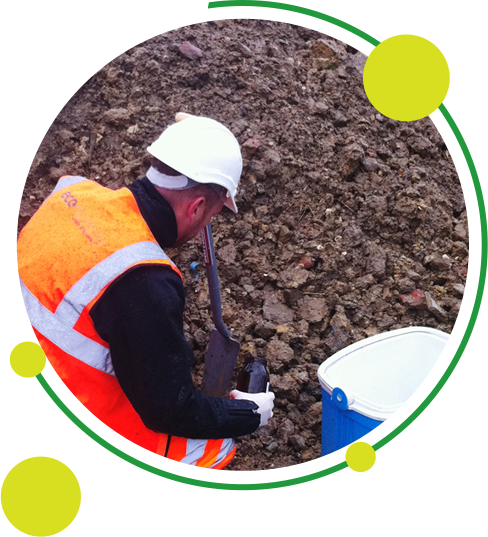
The role of the environmental professional includes determining the best case, compliant solution for managing contaminated soil removal projects, given the specifics at each job site.
This process typically begins with an evaluation of any existing soil analytical data to determine the exact waste classifications that apply.
Analytical results detecting Volatile Organic Compounds (VOC’s), Semi-Volatile Organic Compounds (SVOC’s), Metals, Herbicides, Pesticides, PCB’s, and Toxicity Characteristics are evaluated to determine soil waste classification as defined at the federal level by the EPA, as well as State level designations that apply to soil remediation.
Evaluation of the waste classification data, along with other factors, also allows for determination of the most suitable and cost effective disposal facility option.
During the data review process, the soil waste class results are compared to a specific list of maximum concentration limits that have been established for each compound (chemicals) and analyte (metals).

Disposal facilities are required by law to comply with the conditions as set forth in the permits issued to them by their respective State, which define their acceptance limits based upon concentration levels for each individual contaminant.
The waste classification evaluation process can at times be streamlined by first taking note of certain compounds and analytes, such as Total Benzo(a)Pyrene, PCB’s, Lead, and Arsenic, which are often the most prevalent contaminants to be considered in relation to facility acceptance limits.
When reviewing soil waste class data we typically find, for example, that the PAH compound, Benzo(a)Pyrene can be somewhat of a bellwether, such that if the Benzo(a)Pyrene concentrations are below the targeted facility’s acceptance limits, then it is expected that the remaining PAH compound values will also meet those limits, with rare exception.
In the case of evaluating Total Metals for purposes of facility approval, we typically find in most (but not all) cases, that when Total Lead and Total Arsenic meet the acceptance limits, then the remaining TAL Metals will usually also meet those limits.
Environmental professionals managing contaminated soil related projects must possess a comprehensive understanding and knowledge of facility-specific acceptance criteria that apply at each of the numerous landfills, recycling facilities, and re-use facilities within their region of service.
For more information, contact Rich Rivkin of Enviro-Disposal Group,
